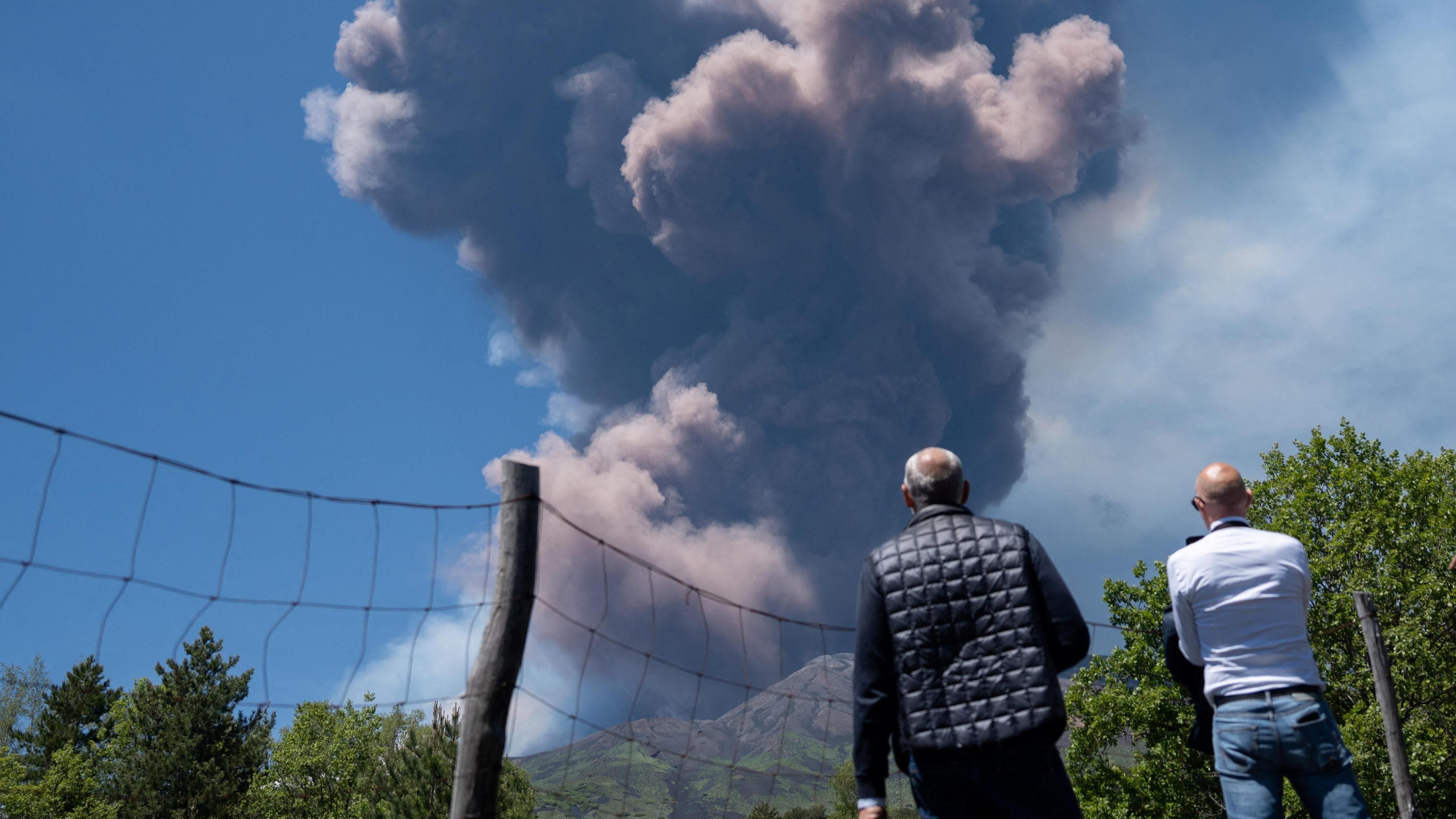Watch: Erupting volcano in Sicily spews huge plumes of smoke and ash (some of the video has been sped up)
Europe's most active volcano, Mount Etna, erupted again on Monday, sending large plumes of ash and smoke into the skies above the island of Sicily in Italy.
Mount Etna's eruptions happen quite frequent, and they are not usually disruptive or a threat to the local people.
The full scale of the eruption is currently unclear, but it is not expected to cause significant damage or injury.
Experts are keeping a close eye on the volcano's activity.
The Big Question: Why do volcanoes actually erupt?
Italy's National Institute of Geophysics and Volcanology (INGV) Etna Observatory said it was likely that part of the volcano's crater had collapsed and that this was the material being carried down its slopes.
This material, known as pyroclastic flow, can be dangerous to the surrounding area, but there has been no indication of it being a threat a the moment.

Locals stop to observe the eruption in the town of Milo
Planes are still able to fly in and out of the island's airports, despite an earlier warning there may be some disruption.
Mount Etna is on the largest Mediterranean island of Sicily, which is located off the south coast of Italy.
It last erupted around two weeks ago, when lava was seen spewing into the air and down the side of the mountain.











